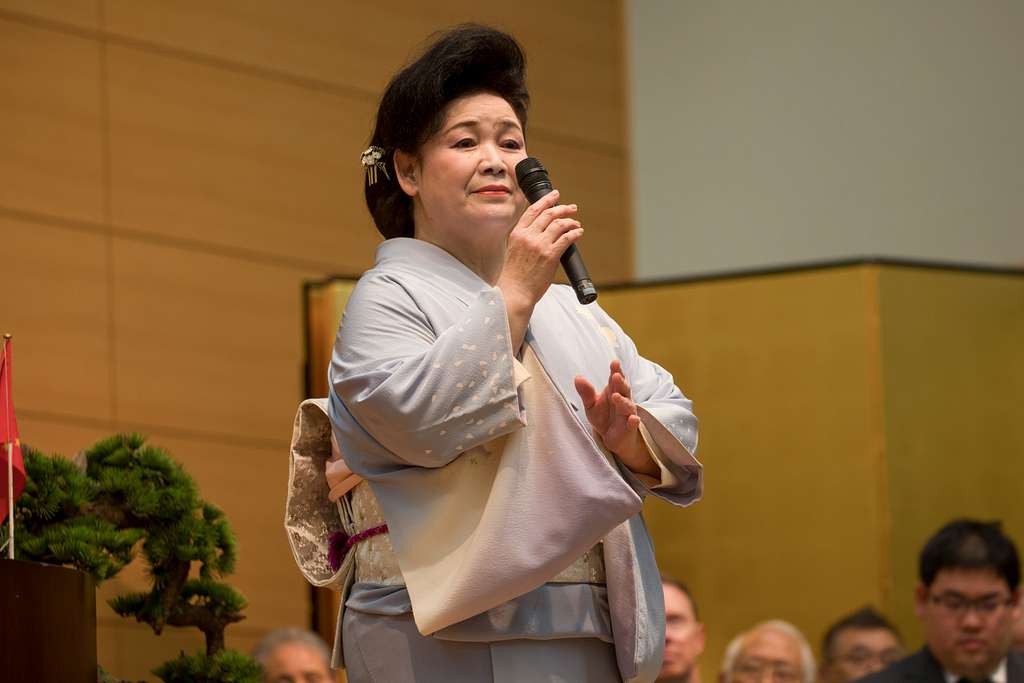Japanese music, deeply rooted in cultural and religious traditions, has evolved over centuries, incorporating foreign influences and creating unique forms of expression. From the ancient sounds of stone flutes and the ritual chants of the Ainu to the sophisticated compositions of modern avant-garde composers, the history of Japanese music spans a vast range. This journey through five significant periods reveals how Japan’s musical landscape has continually transformed and adapted, all while maintaining its original identity. Discover the fascinating developments and influences that have shaped Japanese music and continue to resonate today.
Alongside the now dominant European (or let’s say, western) music, there still exists a rich musical tradition characterized by monophonic melodies without harmonic accompaniment and a highly refined use of microtones, timbres, and free rhythms.
First Period (up to the end of the 6th century): Archaeological finds include stone flutes and bronze bells. Clay figures from burial mounds depict dancers, zither players, and drummers. Early 8th-century texts mention bamboo flutes and a substantial repertoire of songs. The jaw harp and epic singing of the Ainu culture are also considered part of this ancient period. Music was often connected to rituals and ceremonies, emphasizing the importance of sound in religious and communal activities.
Second Period (7th–10th century): With the arrival of Buddhism, music from China, Korea, India, Central Asia, and beyond came to Japan in waves. The 75 instruments preserved in the Shōsōin, the treasure house of Emperor Shōmu (d. 756) in Nara, reflect the international music style of that era, which saw the development of Gagaku. From 701, Gagaku was overseen by the imperial music office. By the 9th century, the diverse styles were reorganized into two main categories: “right music” (Komagaku) from old Korean kingdoms and “left music” (Tōgaku) from China and other Asian countries. Some Gagaku arrangements of secular vocal music (Saibara-rōei) and Shinto ceremonial music (Kagura) only partially integrated indigenous traditions. This period also saw the formalization of musical notation systems, enabling the preservation and transmission of complex musical pieces.
Third Period (11th–16th century): Outside the court, monasteries and the patronage of the samurai nurtured further elements of imported music. Buddhist chant (Shōmyō), based on Indian hymns, evolved into new, uniquely Japanese hymns (Wasan, Goeika). The Biwa, associated with Buddhist music, contributed to the rise of epic singing and war tales. This instrument is a precursor to the Satsuma-biwa and Chikusen-biwa of southern Japan, still in use today. The Nō theater, with its two hourglass drums (Ōtsuzumi, Kotsuzumi), frame drum (Taiko), and transverse flute (Nōkan), remains vibrant, reflecting rural instrumental ensemble traditions and a singing style influenced by Buddhism. During this time, the Heike Biwa became prominent for its role in narrating the Tale of the Heike, an epic story of the Genpei War.
Fourth Period (17th to mid-19th century): The three-stringed Shamisen, introduced from the Ryukyu Islands in the mid-16th century, became a hallmark of a new urban music culture. It led to many epic and lyrical singing styles. The art of recitation (Jōruri) in puppet theater reached its peak with the Shamisen, becoming Gidayūbushi. The Shamisen also contributed to the creation of Kabuki dance songs (Nagauta) with extensive instrumental interludes. New Koto music, composed of instrumental pieces (Danmono or Shirabemono) and accompanied songs (Jiuta), often performed in trios with Koto, Shamisen, and Shakuhachi, emerged during this time. Koto music is still taught by schools like Ikuta, Yamada, and Joshisawa. The Shakuhachi’s tradition, spread by wandering monks of the Fuke school, continues through the Kinko and Tozan schools. Additionally, this period saw the flourishing of the Jiuta ensemble music tradition, which combined Koto, Shamisen, and Shakuhachi in intricate and expressive performances.
Fifth Period (from the mid-19th century): With Japan’s opening to Western influences, traditional music lost prominence. The remnants of these traditions vary in age, preserved mainly by the Japanese principle of teaching students to follow their teachers’ models strictly. This has led to new schools rather than innovations within a single tradition. Modern Japanese music often incorporates Japanese-Asian forms, influencing contemporary Western music. Efforts by modern Japanese composers to blend Western composition techniques with Asian sound concepts are evident in the works of Maki Ishii (1936-2003), who studied with B. Blacher, Mamoru Fujieda (b. 1955), who trained with M. Feldman in the USA, and Toshio Hosokawa (b. 1955), who studied with I. Yun and Klaus Huber in Germany. Experimental music is pursued by composers like Toshiro Mayuzumi (1929-1997), Tōru Takemitsu (1930-1996), Toshi Ichiyanagi (1933-2022), and Yūji Takahashi (b. 1938). Akira Nishimura (b. 1958), a representative of the Asian avant-garde, draws inspiration from Asian musical culture. Additionally, the influence of Western instruments and genres led to the emergence of a hybrid musical style that continues to evolve today, exemplified by composers like Ryuichi Sakamoto, who blend electronic music with traditional Japanese elements.
The rich and diverse history of Japanese music demonstrates its remarkable ability to evolve while preserving its core identity. From ancient rituals to contemporary compositions, Japanese music reflects a unique blend of tradition and innovation. We hope this exploration of its evolution has deepened your appreciation for the intricate tapestry of sounds and cultural influences that define Japanese music.
Thank you for your interest in my post and for joining me on this journey through the centuries of Japanese musical heritage. 🙂 In case of any questions don’t hesitate to contact me via thomasakolbe@icloud.com!





